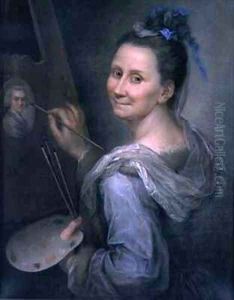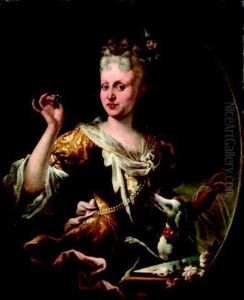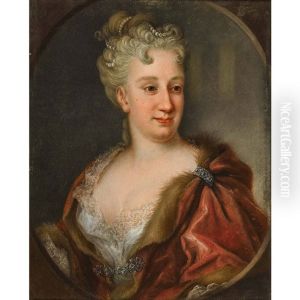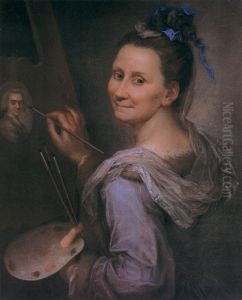Giovanna Fratellini Paintings
Giovanna Fratellini was an Italian painter born in Florence in 1666. A woman artist active during a period when the field was predominantly male-dominated, Fratellini managed to achieve recognition for her work during her lifetime, which was a rare feat. She specialized in portraiture and was known for her skill in capturing the likeness and character of her sitters.
Fratellini was trained by her father, Giovanni Battista Fratellini, who was also an artist. Influenced by the Baroque style, her work often included dramatic lighting and strong contrasts between light and shadow. Despite the limitations placed upon women artists at the time, Fratellini was able to establish herself as a professional artist, receiving commissions from various members of the Florentine elite, including the Medici family, which was a testament to her talent and the quality of her work.
Her paintings were typically small in scale, and beyond portraiture, she also painted miniatures and historical subjects. Fratellini was not only an accomplished painter but also a poet, and her works sometimes reflect the sensibilities of her literary interests. She was a member of the Accademia del Disegno in Florence, an institution that played a significant role in the artistic life of the city. Fratellini's success as an artist in her time was unusual and is indicative of her exceptional abilities, both technical and creative.
Giovanna Fratellini passed away in Florence in 1731. Although not as well-known today as some of her contemporaries, her work is recognized by art historians as an important part of the Baroque period in Italian art. Her legacy is preserved in her portraits, which continue to be studied for their quality and for the unique perspective they provide on the role of women artists in the early modern era.



